The Fritton screen donor images.
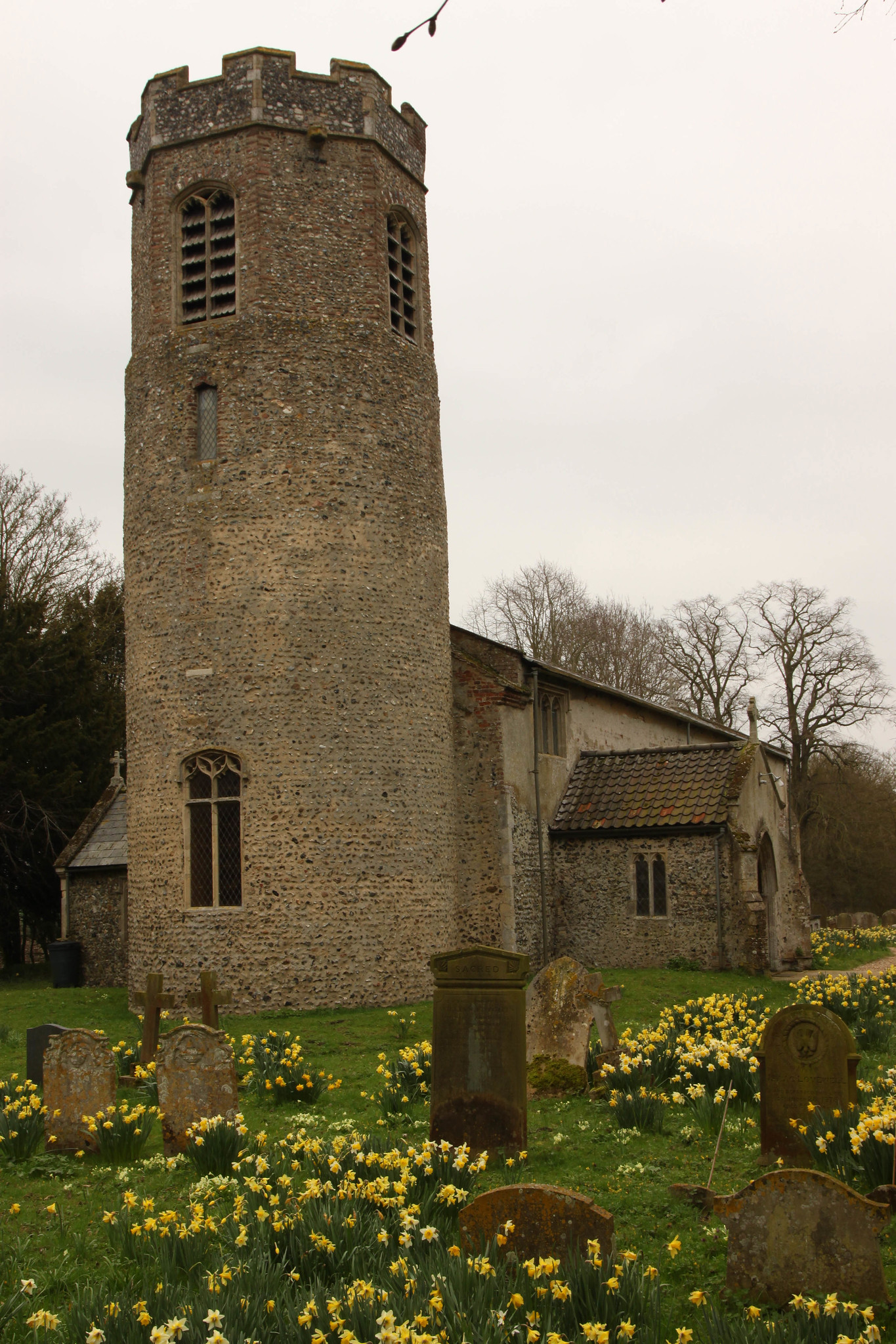
On the day I came to Fritton it was already mid afternoon and I had that morning visited some Norfolk heavy-weights. I had begun the day at East Harling, before moving on to Attelborough and Wymondham and was heading now to Shelton, which I was keen to get to before I went on to Norwich. As I passed towards Shelton, I came through Fritton and as I saw the village sign and in the back of my mind I remembered that there was something significant here. I couldn't remember what it was, but decided to stop at the church anyway.
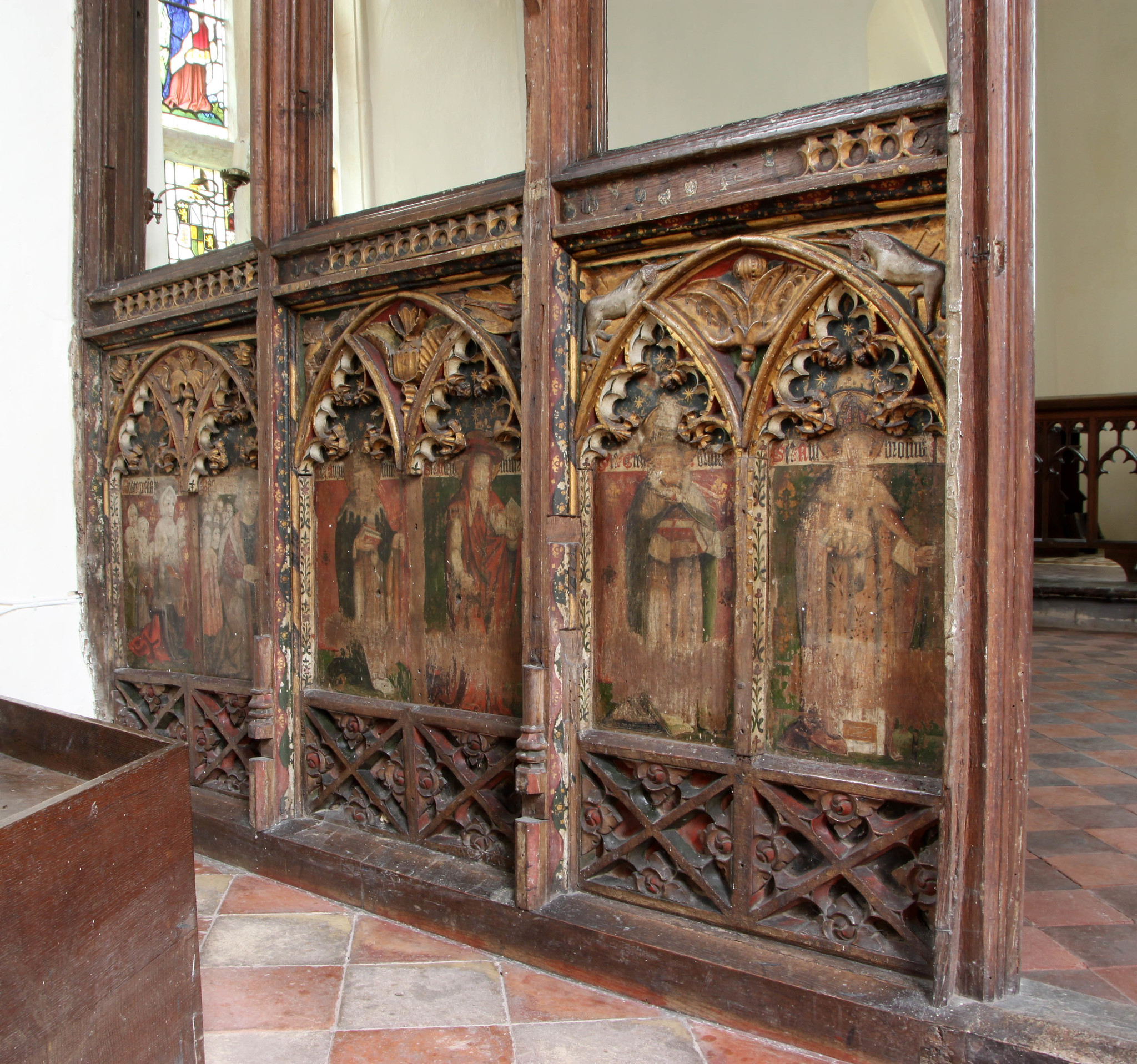
I'm glad I did, Fritton is a beautiful Norfolk round-tower church, set in a secluded churchyard away from the village it serves. When I was there in mid April the churchyard was full of daffodils. Inside there is a painted rood screen and it's the screen that I had remembered. It's not one of the better examples and is rather battered and bruised by the centuries, but is important as incorporated into its decoration are kneeling figures of the donors who paid for the screen to be decorated in the early sixteenth century. There are quite a few screens that have inscriptions referring to donors, but only two or three that have donor images incorporated into them in this way.
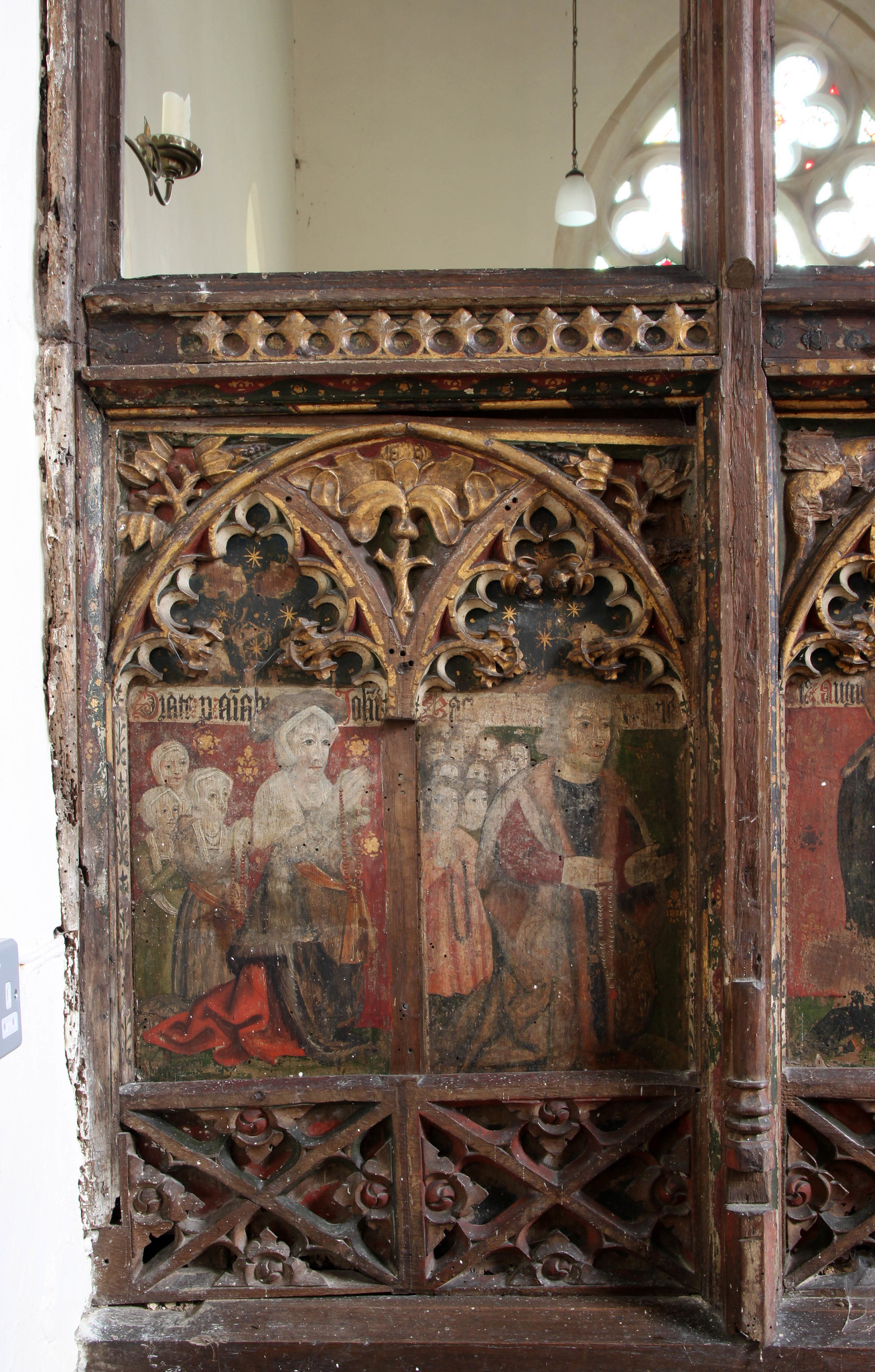
The donor panels on this screen are on the far left of the dado, up against the wall and are obscured by the modern pulpit. The left hand part of the dado is divided into three divisions, each in turn divided into two panels. There are two panels of donors: a man and his twelve sons and a woman and her three daughters. The inscription above the panel reads 'Orate pro animabus Johannes Bac...' indicating that these images are of the family of a man who was perhaps called John Bacon?
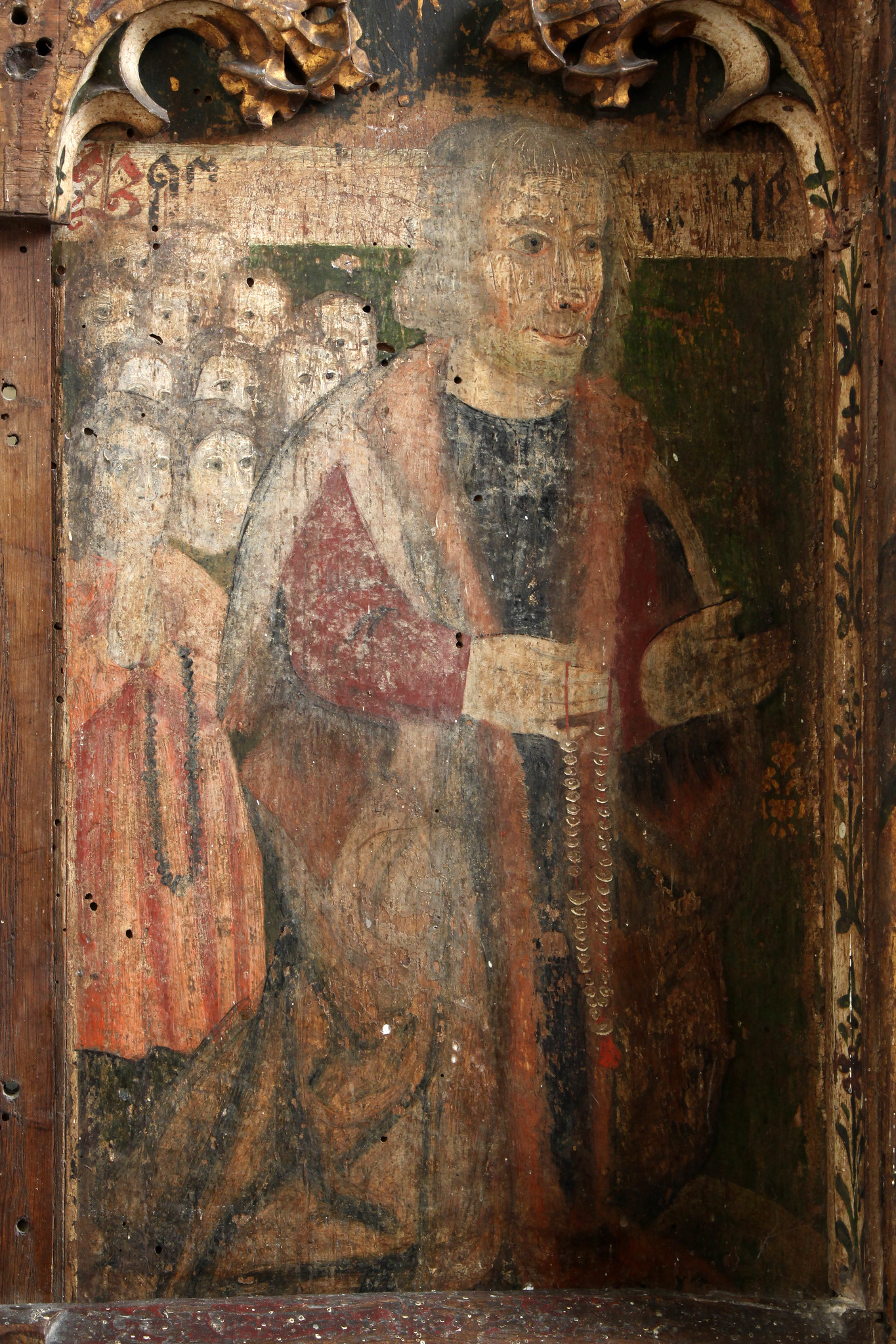
The family are all fashionably dressed and were clearly people of substance in this place, John Bacon himself is clad in a fur-lined coat over his doublet. In his hands is a string of paternoster beads, rock crystal strung on a vibrant red cord. One of the sons behind him also has a set of beads. His mode of dress suggests a date of c.1510-20.
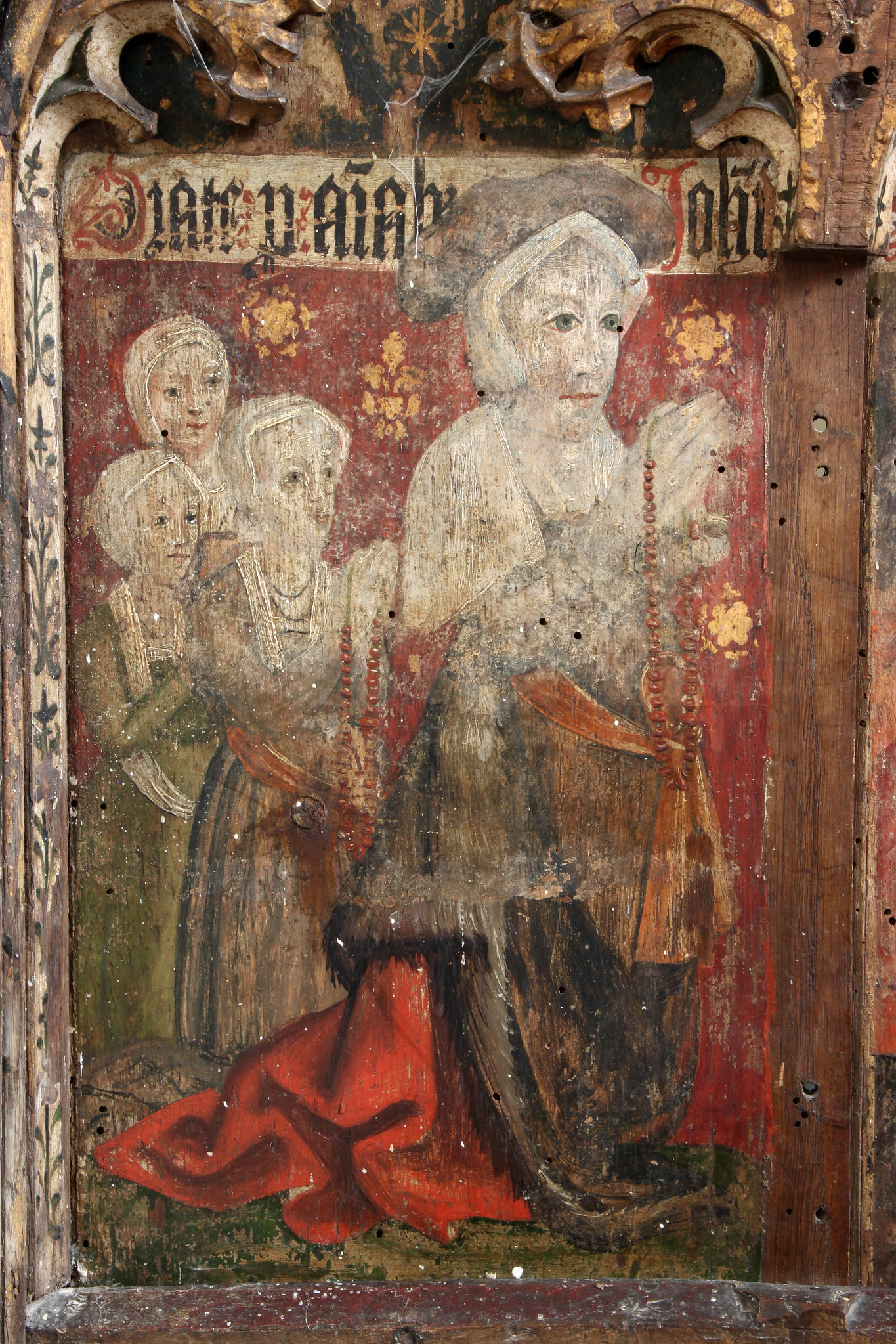
The image of Bacon's wife and daughters similarly shows them to be people of substance and devotion. Bacon's wife is also dressed in fur, over a scarlet gown and in her hands is a set of paternoster beads of red coral. Behind her daughters kneel in the attitude of the prayer, the eldest one also with beads of coral. The pedimented headdresses worn by all four, confirm a date of c.1510-20 too.
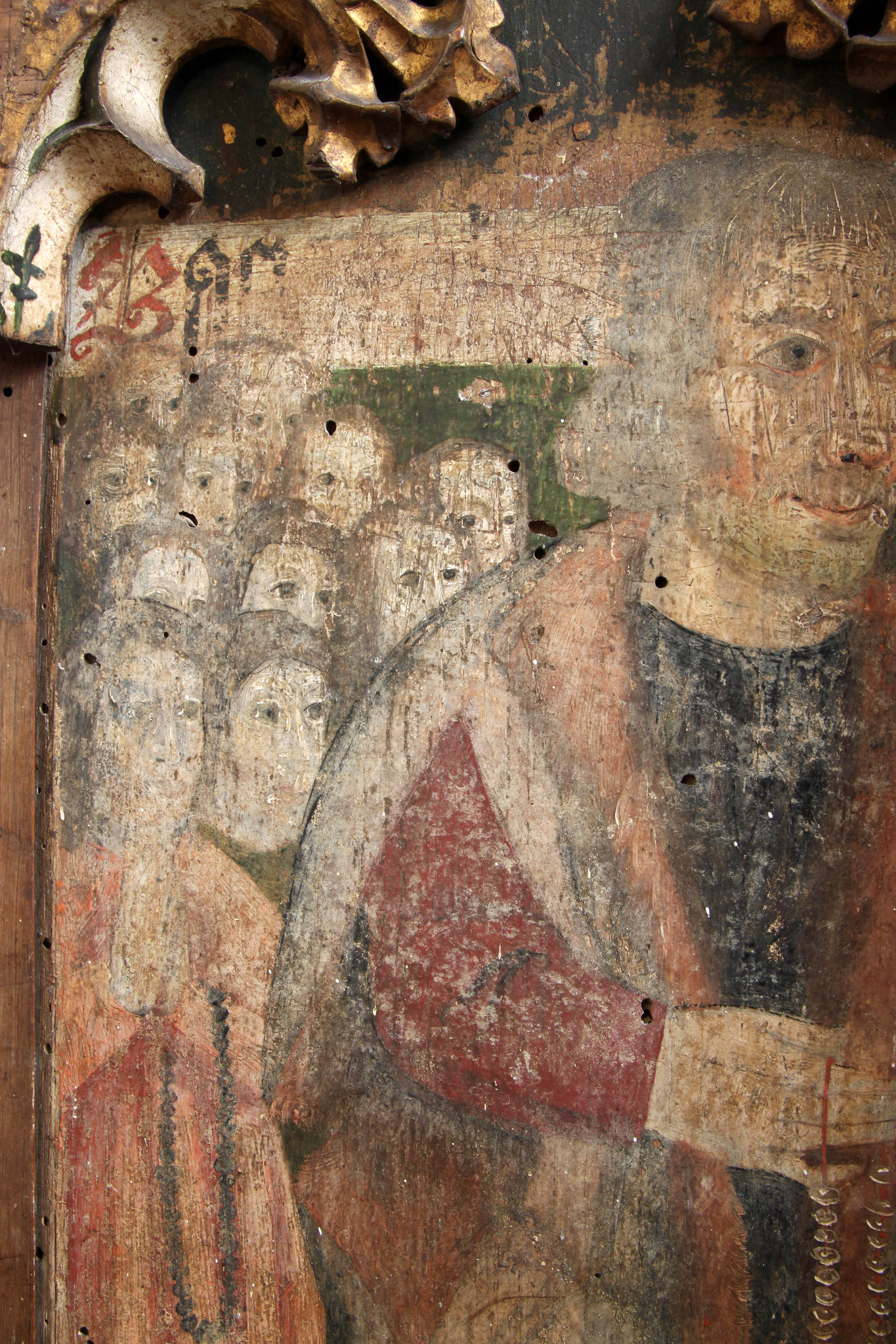
The two groups of figures are at prayer and their eyes focused on something outside their panels, presumably the images of the four Doctors of the Church in the neighbouring panels.
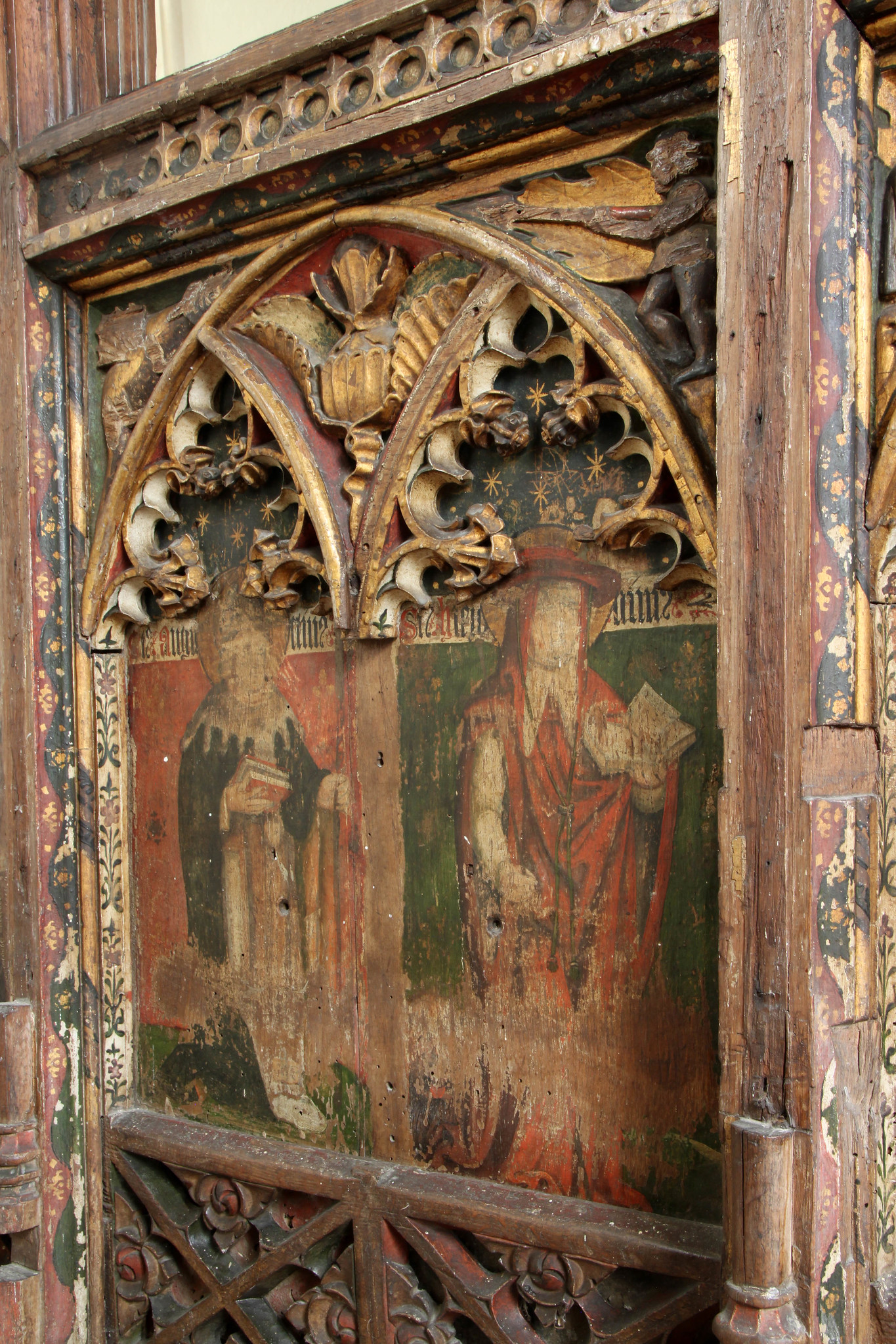
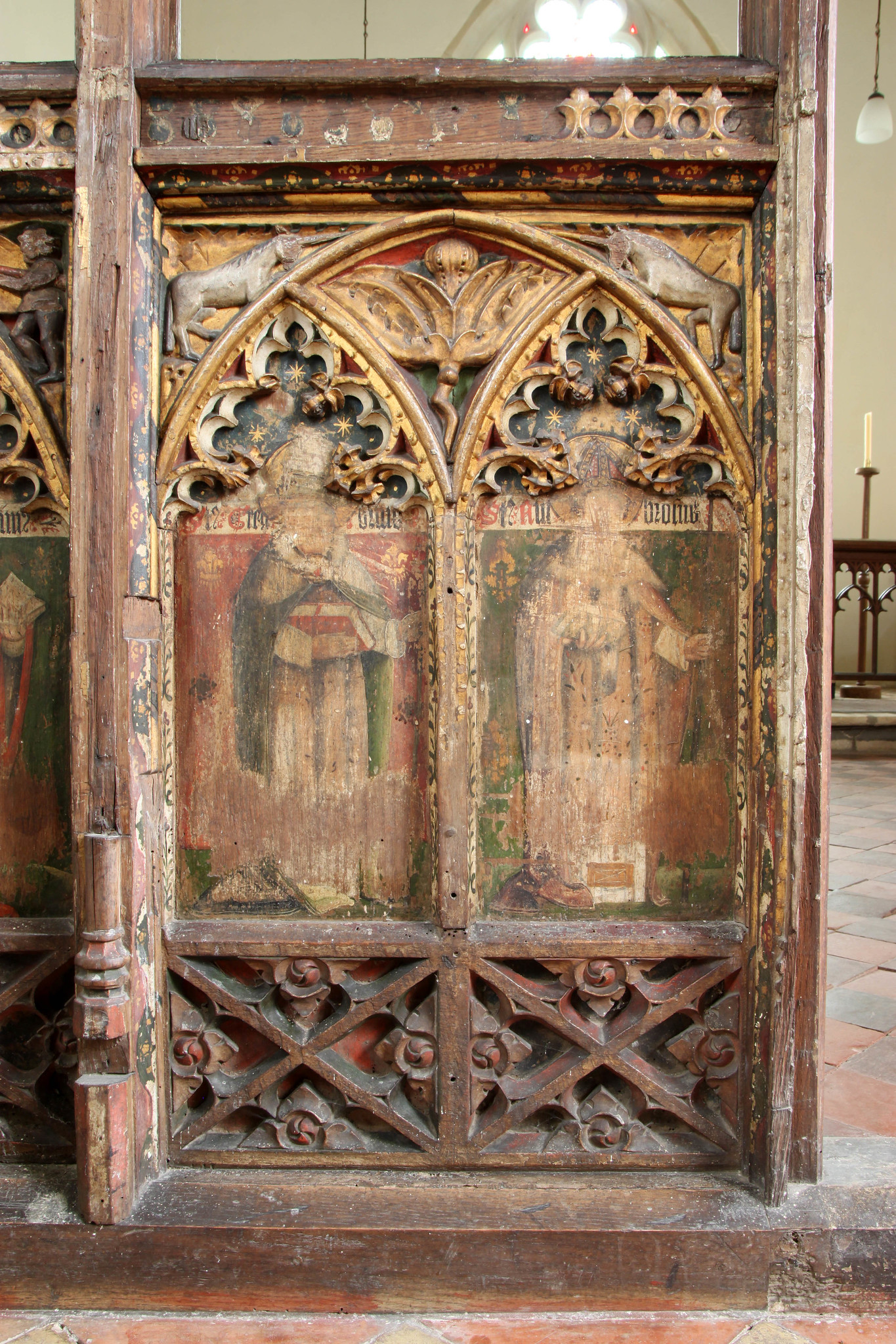
These four figures stand dressed in full pontificals and neatly labelled: St Augustine, St Jerome, St Gregory and St Ambrose. As we move along the screen these figures display a lovely counter-change of red-robed figure against green ground and green-robed figure against red. Above is a dark blue star-studded sky. Although the faces of Bacon and his family have been entirely spared, the faces of these four figures, the focus of their devotion, have been ruthlessly scratched away - emblematic as they were of the power of the Roman Church.
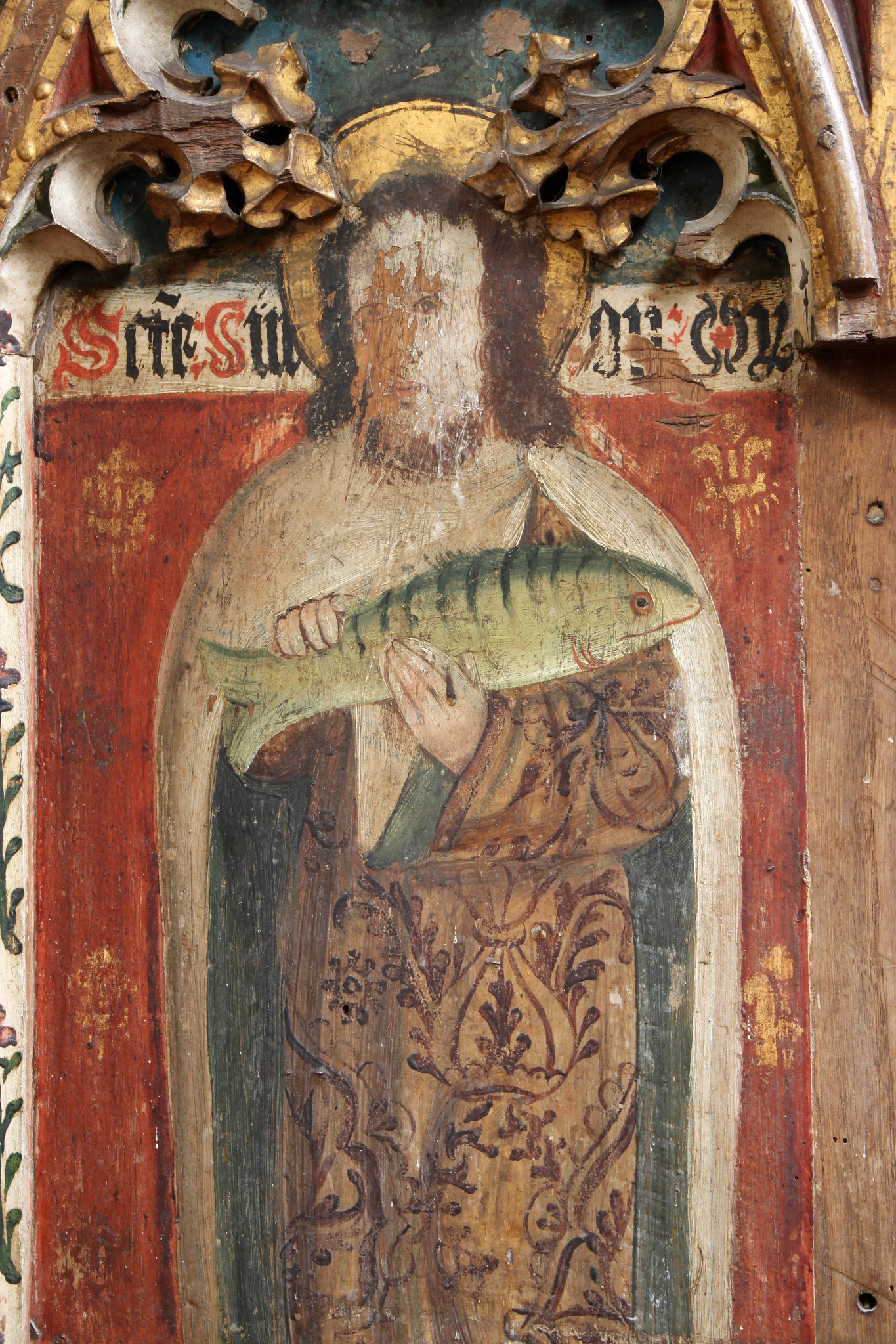
Crossing to the other side of the screen and there are only two figures painted on the dado here, the blank area of the screen may indicate the former presence of a side altar. The figures are of the Apostles St Simon and St Jude, St Simon labelled and holding his emblem a large green fish, with big red eyes. St Simon's face has been rather more half-heartedly scratched away. He is set against a red ground with a robe of red and gold tissue.
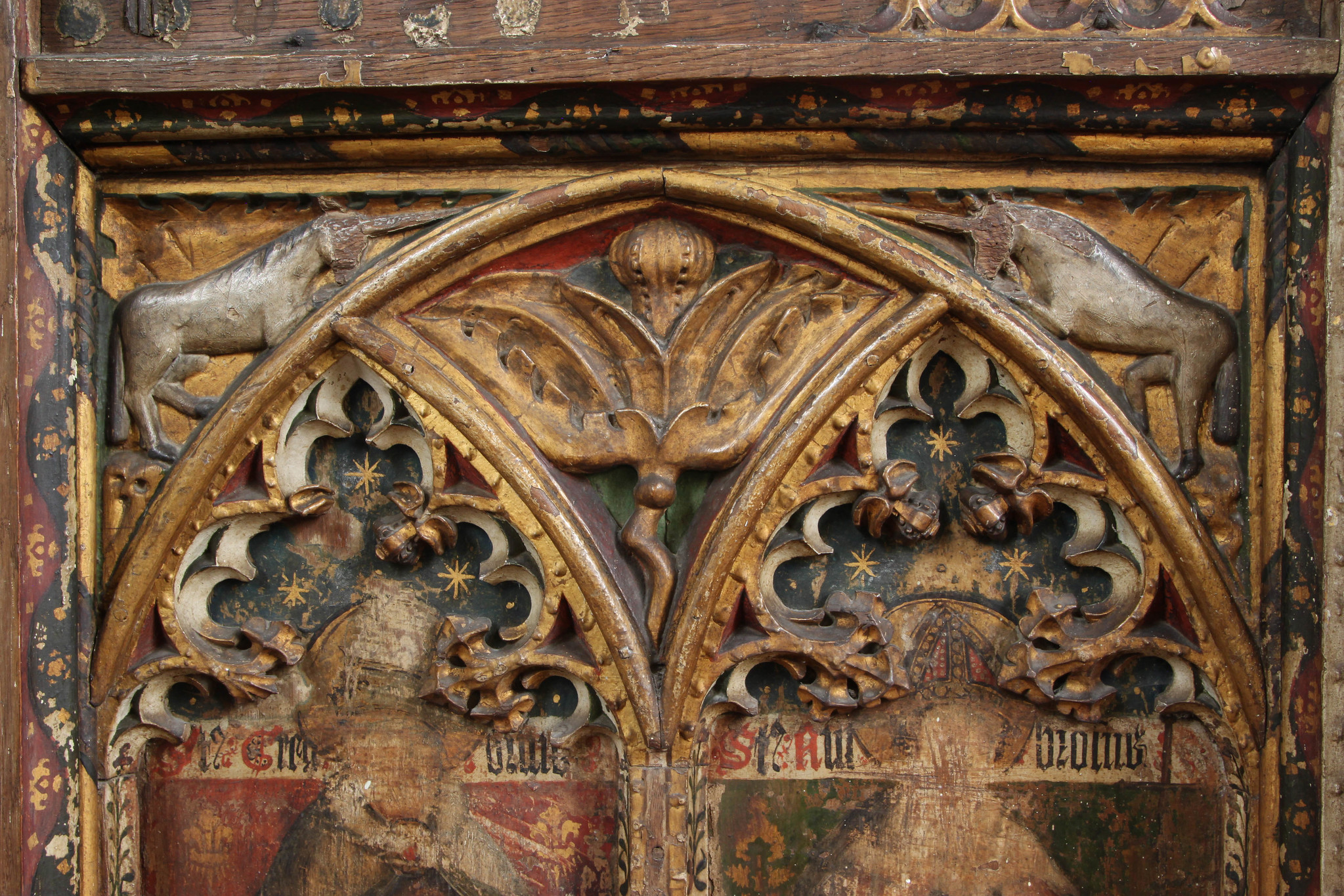
I must not forget to mention the supporting images in this fabulous late medieval scene. It is common in screens of the early sixteenth century in East Anglia, for the tracery above the panels of the screen dado to elaborately carved and inhabited with interesting subsidiary images. Above the heads of St Gregory and St Ambrose are a pair of unicorns, their heads tilted as though they are about to go into battle with one another.
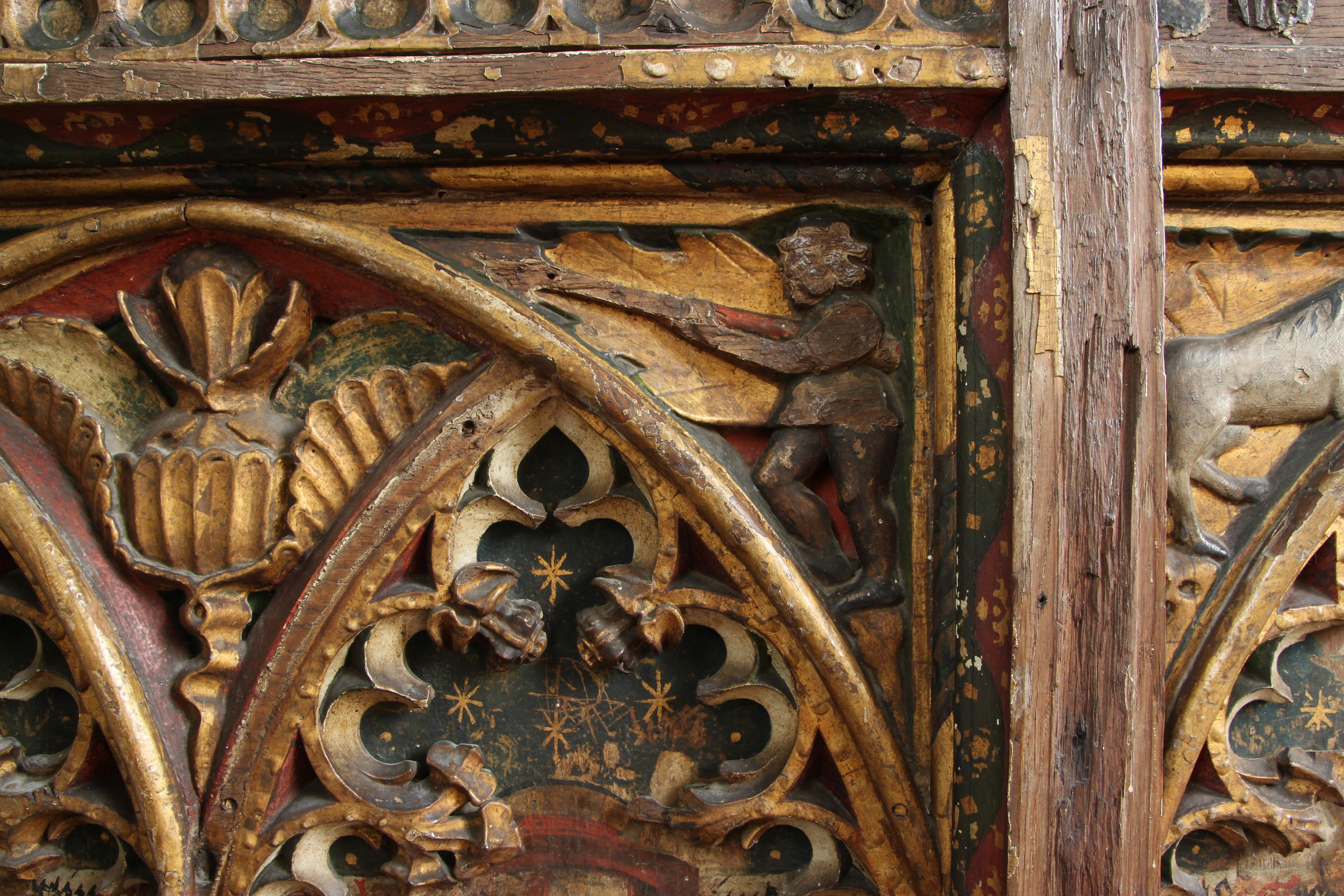
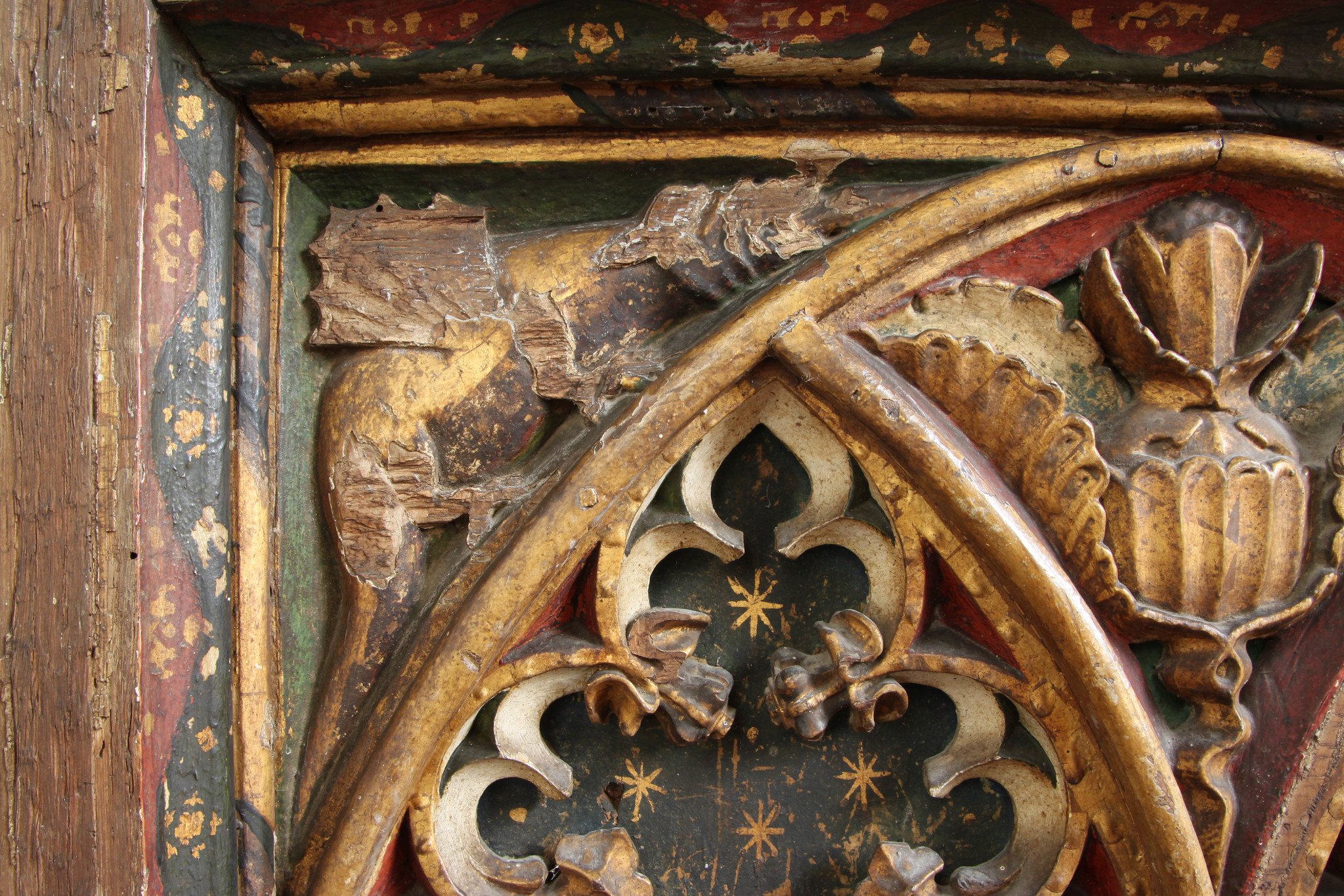
Above St Augustine and St Jerome, a man with a spear sets out to do battle with a dragon. Altogether this is a delightful screen, giving a fascinating glimpse into the world of late medieval lay piety - Bacon and his family, after five hundred years, are still declaring their substance, their faith and their devotion. It was a joy to come across this treasure, as if by chance and for a time I just sat down in the church on the steps of the pulpit and drank in both the silence of this secluded church as I gazed on these rather wonderful images.

Comments
I'll be back in Saint Davids this week - I'll revisit the Bishop's throne with interest